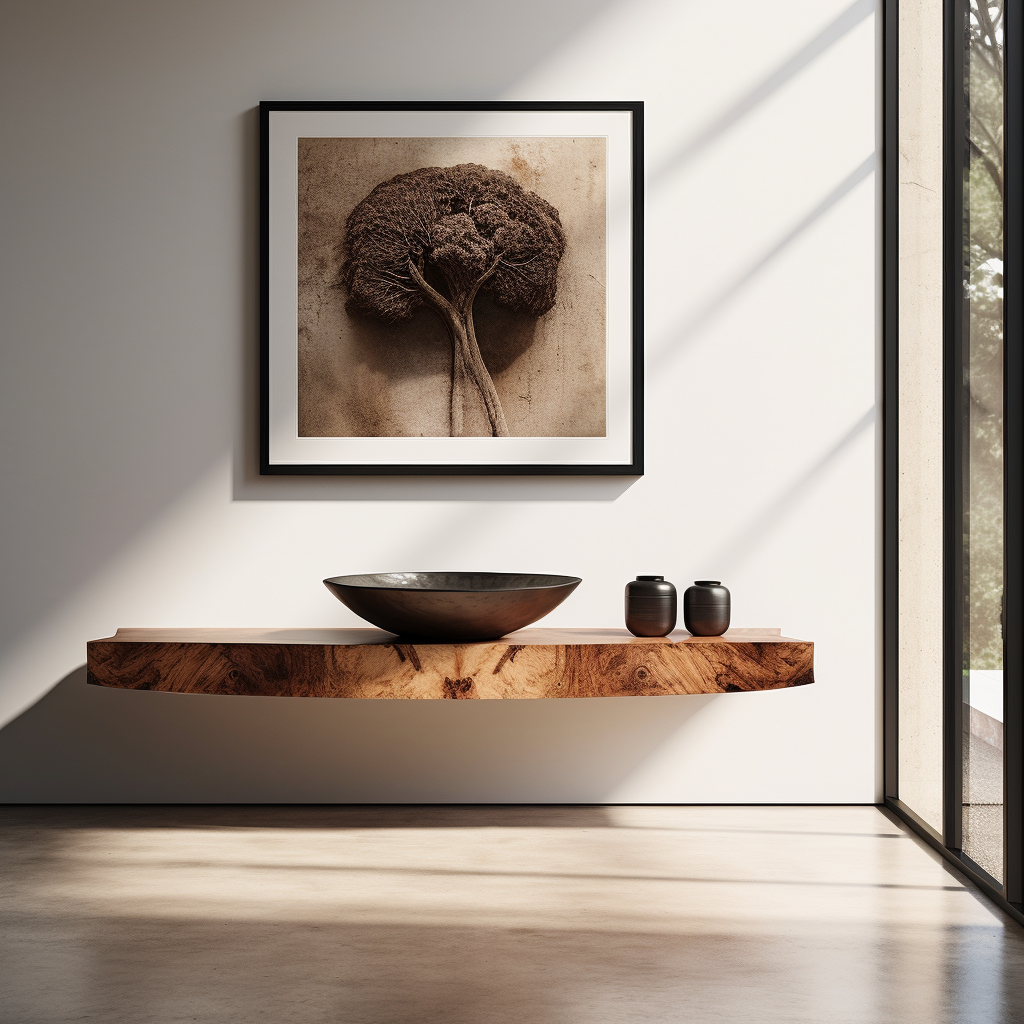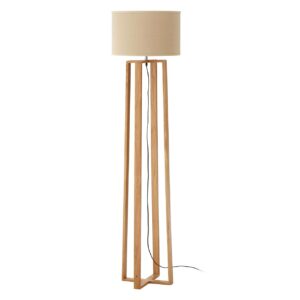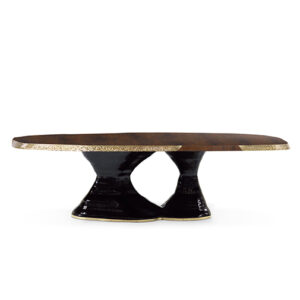Burl wood is a type of wood that has a unique and beautiful grain pattern, often used for furniture, art, and interior decor. It is a natural phenomenon that occurs when a tree grows in a deformed manner, producing a large and often spherical outgrowth on its trunk or branches. Burls are highly prized by woodworkers and artists for their unique and beautiful patterns, colors, and textures. Burl wood is often called nature’s artistry, as it showcases the amazing diversity and creativity of the natural world. In this article, we will explore the origins, characteristics, and uses of burl wood, as well as some of the challenges and controversies surrounding its harvesting and trade. We will also share why burl wood products are a demonstration of the beauty and value of this rare and remarkable material.

What Causes Burl Wood to Form?
Burl wood forms when a tree’s bud tissue fails to sprout normally, resulting in a knobby or burly growth on the trunk, branches, or roots of the tree. The exact cause of this abnormality is not fully understood, but it may be triggered by factors such as damage, stress, fungal infection, viral outbreak, insect infestation, or genetic disorder. This tissue may contain dormant buds that never sprout into branches or leaves, but instead grow into burls. Alternatively, when a tree is infected by fungus, virus, or insects, it may try to isolate the infection by producing abnormal cells that surround the affected area. These cells may also form burls over time. The burl forms in trees as a response to some kind of stress or damage that affects the normal growth cycle of the tree. When a tree is injured by pruning, weather, fire, or animals, it may try to heal itself by producing callus tissue that seals off the wound and acts as a defense mechanism for the tree, sealing off the affected area and preventing further harm.
Some burls may grow slowly over many years, while others may grow rapidly in a short period of time. Some burls may be influenced by environmental conditions such as soil quality, moisture, sunlight, and temperature. Some burls may be influenced by genetic factors such as mutations or variations within a species or family of trees. Some burls may be influenced by a combination of these factors or by other unknown causes. The burl growth disrupts the normal grain pattern of the wood, creating complex and swirling designs that are unique to each piece. The burl also increases the density and hardness of the wood, making it more resistant to decay and insects. Burl wood can be found on the surface of the tree, near the soil at the base of the tree, or underground attached to the root system.

Trees that Produce Burl Wood
Burl wood can be found on many different tree species, such as cherry, elm, oak, walnut, maple, and ash. Each tree species produces burl wood with different qualities and characteristics, such as color, texture, hardness, and durability. Here are some examples of how burl wood differs from each tree species:
- Cherry burl wood has a reddish-brown color with dark swirls and eyes. It is moderately hard and dense, and has a fine and even texture. It is easy to work with and finishes well. Cherry burl wood is often used for furniture, cabinets, musical instruments, and decorative items.
- Elm burl wood has a light brown color with darker brown or black patches. It is very hard and heavy, and has a coarse and uneven texture. It is difficult to work with and prone to splitting. Elm burl wood is often used for veneer, flooring, paneling, and bowls.
- Oak burl wood has a light tan color with dark brown or black rings and rays. It is very hard and strong, and has a coarse and open texture. It is easy to work with and finishes well. Oak burl wood is often used for furniture, flooring, doors, barrels, and carvings.
- Walnut burl wood has a dark brown color with lighter brown or golden swirls and eyes. It is moderately hard and dense, and has a fine and even texture. It is easy to work with and finishes well. Walnut burl wood is often used for furniture, cabinets, gunstocks, musical instruments, and jewelry boxes.
- Maple burl wood has a light cream color with reddish-brown or black swirls and eyes. It is moderately hard and heavy, and has a fine and even texture. It is easy to work with and finishes well. Maple burl wood is often used for furniture, cabinets, musical instruments, turnings, and veneer.
- Ash burl wood has a light brown color with darker brown or black patches. It is moderately hard and heavy, and has a coarse and open texture. It is easy to work with and finishes well. Ash burl wood is often used for furniture, flooring, baseball bats, tool handles, and veneer.
Trees that Produce Burl Wood
One of the main reasons why burl wood furniture is so appealing is its aesthetic value. Burl wood has a natural charm and character that is hard to replicate with other types of wood. It can display a variety of colors, textures, and patterns, depending on the species of the tree, the location of the burl, and the way it is cut and finished. Burl wood furniture can add warmth, elegance, and personality to any space, whether it is a living room, a dining room, or a bedroom.
Another reason why burl wood furniture is popular is its uniqueness. No two pieces of burl wood are exactly alike, which means that every piece of burl wood furniture is one-of-a-kind. Whether it is a table, a chair, a cabinet, or a decorative item, burl wood furniture can make a statement and stand out from the crowd. Some examples of burl wood furniture pieces are:
How to Recognize Burlwood
Burlwood can be recognized by its irregular shape and texture, often forming rounded or knobby growths on the trunk or branches of trees. It can also be found underground, attached to the roots of trees. Usually, it has a dense and complex grain pattern, with swirls, curls, eyes, and knots. Burlwood can vary in color, depending on the type of tree and the mineral content of the soil.
Burlwood is usually harvested from trees that are dead or dying, or from trees that are cut down for other purposes. Burlwood is not a separate species of wood, but rather a growth characteristic that can occur in many types of wood. Therefore, burlwood can have different properties and qualities, depending on the original wood type .Burlwood can be carved, turned, polished, stained, or painted to enhance its natural beauty.

Significance in Furniture and Decor
Burl wood is highly sought after for furniture and decor because of its rarity and aesthetic appeal. It has a natural charm and character that adds warmth and elegance to any space and it can be used for various purposes, such as tables, mantels, countertops, desks, headboards, wall art and more. Not only that, burl wood furniture and decor can suit any style, from rustic to modern, it can also be used to create a focal point in any room.
Burl wood is also valued for its durability and resistance to insects and decay. Because burl wood is formed from dense and irregular grain patterns, it is stronger and harder than normal wood and it also has a natural protective layer that prevents it from rotting or being infested by bugs. Burl wood furniture and decor can last for generations if properly cared for. Burl wood is not only beautiful and durable, but also an eco-friendly option as it is often reclaimed from trees that have been cut down for other purposes, or salvaged from fallen or dead trees. By using burl wood, furniture makers and decorators can reduce waste and preserve the natural beauty of the wood.
Factors to consider when purchasing burl wood furniture
Burl wood furniture is not cheap, so you want to make sure you are getting the best value for your money. Here are some factors to consider when shopping for burl wood furniture:
- Quality: Burl wood is a rare and natural material, so each piece is unique and may have variations in color, grain, texture, and shape. However, this does not mean that all burl wood furniture is of equal quality. You want to look for burl wood furniture that has been well-crafted, finished, and polished to bring out its natural beauty and protect it from damage. You also want to avoid burl wood furniture that has been artificially stained, dyed, or painted to enhance its appearance, as this may compromise its authenticity and durability.
- Craftsmanship: Burl wood furniture can be made from different types of wood, such as maple, walnut, oak, cherry, or pine. Each type of wood has its own characteristics and advantages, so you want to choose the one that suits your taste and needs. You also want to pay attention to the craftsmanship of the furniture, such as the joints, hinges, hardware, and design. You want to look for burl wood furniture that has been skillfully and carefully made by experienced and reputable woodworkers who have a passion for their craft.
- Authenticity: Burl wood furniture is often imitated by using veneers or laminates that mimic the appearance of burl wood. While these may look similar at first glance, they are not the real thing and may not last as long or have the same value as genuine burl wood furniture. You want to look for burl wood furniture that has been certified or verified by a trusted source, such as a dealer, appraiser, or collector. You also want to ask for the history and provenance of the furniture, such as where it was made, who made it, and how old it is.

Caring for Your Burlwood: Preserving Nature's Masterpiece
Burlwood, with its exquisite grain patterns and natural allure, requires special care to maintain its beauty and longevity. Whether it’s a burlwood furniture piece, decor item, or art creation, proper maintenance ensures that its unique charm lasts for generations. Here are essential tips on how to care for your burlwood:
1. Regular Dusting: Dusting your burlwood regularly with a soft, lint-free cloth helps prevent the buildup of dirt and grime. Gently wipe the surface in the direction of the wood grain to avoid scratching.
2. Avoid Direct Sunlight: Exposure to direct sunlight can cause burlwood to fade and lose its luster over time. Keep your burlwood furniture away from windows or use curtains and blinds to block out harmful UV rays.
3. Moisture Control: Burlwood is sensitive to changes in humidity, which can cause it to warp or crack. Maintain a stable indoor environment with moderate humidity levels to prevent damage. Use a humidifier in dry climates and a dehumidifier in humid environments as needed.
4. Protective Measures: Use coasters, placemats, and trivets to protect your burlwood surfaces from spills, heat, and moisture. Promptly wipe up any spills with a clean, damp cloth to prevent staining.
5. Gentle Cleaning: For stubborn stains or dirt buildup, use a mild wood cleaner or a solution of water and vinegar. Avoid harsh chemicals or abrasive cleaners that can damage the wood finish.
6. Moisturize the Wood: Burlwood can benefit from occasional moisturizing to prevent it from drying out and cracking. Apply a high-quality wood conditioner or polish formulated for exotic woods to nourish and protect the surface.
7. Avoid Sharp Objects: Avoid placing sharp objects directly on your burlwood surfaces to prevent scratches and gouges. Use felt pads or coasters under decorative items and tableware to protect the wood from damage.
8. Regular Inspection: Periodically inspect your burlwood furniture for any signs of wear, damage, or loose joints. Address any issues promptly to prevent further deterioration.
9. Professional Maintenance: For extensive repairs or refinishing, consult a professional furniture restorer or woodworker experienced in working with burlwood. They can assess the damage and recommend the appropriate course of action to restore your burlwood to its former glory.
10. Seasonal Care: During seasonal changes, pay extra attention to your burlwood furniture’s care needs. Adjust indoor humidity levels accordingly and perform thorough cleaning and maintenance to protect the wood from environmental fluctuations.
Burl wood is a fascinating type of wood that has many applications and benefits. By understanding what burl wood is, how it forms in trees, and what types of trees produce it, you can appreciate its beauty and value more fully. Whether you are looking for a piece of burl wood furniture for your home or office, or you are interested in working with burl wood yourself as a hobby or profession




